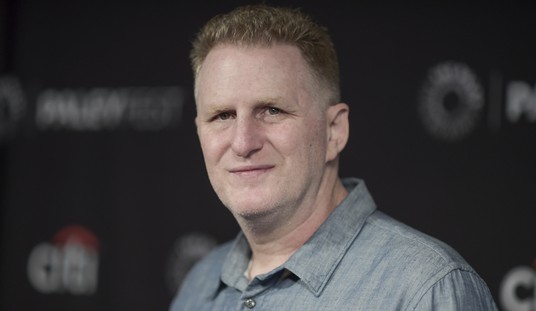The nation’s homelessness czar in the George W. Bush administration says that programs enacted back then have had a dramatic effect on cutting the chronically homeless population, but warns that families are increasingly being left out in the cold as the economy struggles to recover.
“There have never been as many poor people in our country as there are now,” Philip F. Mangano told PJM today, adding that the “highest number ever in the history of our country” are living in “deep poverty,” which is 50 percent below the poverty line and under.
“One of the great indicators of homelessness is poverty,” he said. “Poverty is the waystation before you fall into homelessness.” And with the economic indicators such as the unemployment rate stagnant as they have been, “you can anticipate more people falling into homelessness.”
They’re startling, tragic facts that rarely make headlines in a campaign dominated by conversations about the middle class and a Congress inundated in debate over middle- and upper-income tax cut extensions.
“The poverty rate has never jumped higher than in the past few years and the media is silent on it,” Mangano said. “Most media coverage is focused on middle-class trauma during the recession, not focused on the very poor.”
The National Alliance to End Homelessness, a federation of public and private agencies that reports to the administration and Congress, noted in January’s annual report that the homelessness rate declined by 1 percent between 2009 and 2011. The annual Hunger and Homelessness Survey released in December by the U.S. Conference of Mayors, though, found an average 6 percent rise in homelessness from September 2010 to August 2011, with a 16 percent jump in homeless families.
In the mayors’ survey, unemployment led the list of homelessness causes among both families and homeless adults.
“If we want to make progress in terms of pulling people away from the precipice then it’s very important that the engine of our economy get humming again,” said Mangano, stressing that especially means decreasing stubbornly high jobless rates. “The restoration of our economy is an important ingredient in the long-term solution.”
Mangano became Bush’s executive director of the U.S. Interagency Council on Homelessness in 2002 and ushered in a new way of approaching the goal to end homelessness: looking at the problem through a business lens instead of a social services lens. The distinction, he said, is attending to the immediate needs of the homeless in a social-services capacity versus looking at that population and thinking how to solve their homelessness.
“No longer are we wandering in the wilderness, wondering what might work,” he said. “We actually know what to do.”
It was the 10-year-plan templates, pulling together federal agencies, governors, and mayors, that were put in place during the Bush administration that Mangano credits with making a serious dent in the chronically homeless population — a 37 percent decrease between 2005 and 2009.
Overall homelessness decreased 12 percent during this period.
The basics of thinking about it like a businessman? Invest in innovative solutions that have proven results with hard data to back them up. And that meant stable, long-term housing before quick fixes.
Mangano pulled out the cost-benefit analysis: The housing-first strategy costs between $12,000 and $25,000 per person, per year. It can cost between $35,000 and $150,000 per person, per year “literally to sustain a person in homelessness” with “random ricocheting” from one temporary solution to the next.
“You don’t need to be Warren Buffett or even Suze Orman to figure out which of those is the better investment,” he said.
For the first time, the issue of homelessness was spoken in the vernacular of both politicians and the business community — and what Bush defined early on as a signature policy initiative was off to a running start. Each year, when department chiefs came to the budget table to make a case for their funding, the programs to end homelessness walked away with more cash — eight consecutive years of increased resources for the homeless under the Bush administration.
“That was predicated on demonstrating that there were hard results,” Mangano said. “That line of argument is essential in building political will and sustaining it. That’s what will get the job done. You need to be able to muster the argument of investment leading to results.”
Showing that investments worked with research and data to back it up, he said, was the “best inoculation against cuts.”
The approach drew plaudits from mayors on both sides of the aisle as they implemented 10-year plans in their cities. In Chattanooga, Tenn., the smallest city to participate in the seeding stage of the housing-first initiatives, homelessness ended for nine out of 10 of the most vulnerable chronically homeless.
These mayors, many Democrats, wanted Mangano to stay on through the Obama administration, he said. But the new president wanted to change course.
“I served the first 100 days and they eventually told me that they wanted to have their own team,” Mangano said. Obama’s transition team told him “we appreciate what you did, but we just want our own team.”
A Boston native, Mangano returned to Massachusetts where he would become president and CEO of the American Round Table to Abolish Homelessness, a role in which he continues to collaborate with mayors and governors to formulate and implement strategies shaped by cost studies and cost-benefit analysis with a focus on one final, tell-all metric: decreasing the number of those without a roof over their heads.
“Many faith-based nonprofits get a new vision of what their calling is, which isn’t to manage homelessness but to end it,” Mangano said of how the public mindset is evolving “from simply expending to investing.”
He hopes that the lessons learned from the first decade of this century continue to be applied moving forward by the White House and “that rhetoric is undergirded by investment only in the most substantive ideas.”
“If those basic business principles are not sustained it is possible that the rhetoric goes a bit hollow again,” Mangano said.
And resources allocated to the homeless in Obama’s stimulus plan, rapidly placing those who fell out of the housing market into new housing, have been exhausted.
“I don’t think anyone thought the recession would last as long as it has,” Mangano said. “The sustained nature of the recession and the inability to pull out certainly is a factor in the number of homeless families we’re seeing.”
Far from Americans suffering from compassion fatigue, he said he believes that the recession has given many a new understanding of the challenges faced by the poor — and perhaps a “solution fatigue” in which those dedicating their lives to helping the less fortunate want to see results.
“People who themselves are teetering because of the recession increased their compassion because they have a new understanding of how vulnerable we are,” Mangano said.
But the former homelessness czar said he’s seen the 10-year plans formulated in those years offer “inspiration and remobilization” to communities as they see results from the business-oriented strategies. It tells communities if they “not only approach problems with their hearts but their heads they can make progress.”
Mangano sees on the horizon great opportunity to scale what we now know works to bring an end to chronic homelessness by virtue of private investment.
“We have to think not only about best practices,” he said. “We have to be thinking about next practices.”









Join the conversation as a VIP Member